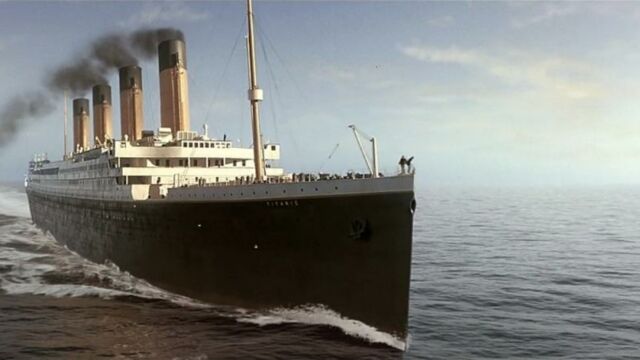The story of the Titanic is one of bad luck, almost a curse. The largest ocean liner of its time sank in just three hours on its maiden transatlantic voyage. More than 110 years after its sinking, and despite the most advanced technology available, no human remains have ever been found. Is this witchcraft? Or is there a more rational explanation?
Discover our latest podcast
Not a bone
Visiting the Titanic, which lies at a depth of 3821 meters in the icy waters of the North Atlantic, is a mission not without risks. The implosion of the Titan submersible in 2023 is a reminder of this. Researchers, who were unable to locate the wreck of the unsinkable ship until September 1985, have never been able to identify any human skeletons on board or in the vicinity.
American director James Cameron had the chance to explore the ship at the bottom of the ocean while he was working on his hit-film Titanic.
I didn't see any human remains. We saw clothes, pairs of shoes, everything to suggest that we would see human remains, but we never did.
The kind of statement that gives conspiracy theories a run for their money. Nevertheless, there are several perfectly rational reasons for this absence.
Quite the opposite, for example, of the wreck of the legendary Antikythera. This ancient Greek shipwrecked in the Aegean Sea was able to return the remains of some of its passengers to the living, more than 2,000 years later.
A question of depth
It was a storm that initially explained why no bodies were found in the vicinity of the Titanic. Lifejackets were also part of the equipment that failed to keep most of the victims afloat. A storm and rough seas then scattered them far from the wreck.
Also, and more importantly, it's the depth at which none of the remains of the 1,500 victims were found. As deep-sea explorer Robert Ballard explained, below 900 meters at this temperature is the carbonate compensation level. This means that once the bones are exposed after being ingested by fish and other marine scavengers, they begin to dissolve. In just a few years, they disappear completely. This is why, a century later, no remains of the Titanic castaways have been found.
TITANIC - l’épave reconstituée en 3D 😱 pic.twitter.com/wpnHxht5SP
— Community Show (@Rireetfun1) August 6, 2023
Read more:
⋙ World's 'deepest shipwreck' discovered in the Philippines Sea
⋙ Sunken ship in River Thames has enough explosives to cause a Tsunami
⋙ This shipwreck contains a treasure estimated at £17 billion, but it is well hidden
⋙ Mysterious 500-year-old ship from the Elizabethan era discovered on English Channel coast
⋙ Archaeologist uncover never-seen-before head of ancient Greek god in a shipwreck
This article has been translated from Gentside FR.
Sources used:
Nature: Human skeleton found on famed Antikythera shipwreck
NBC News: See the Titanic wreckage more than 100 years later
AS: Why human remains were never found at the Titanic wreckage















